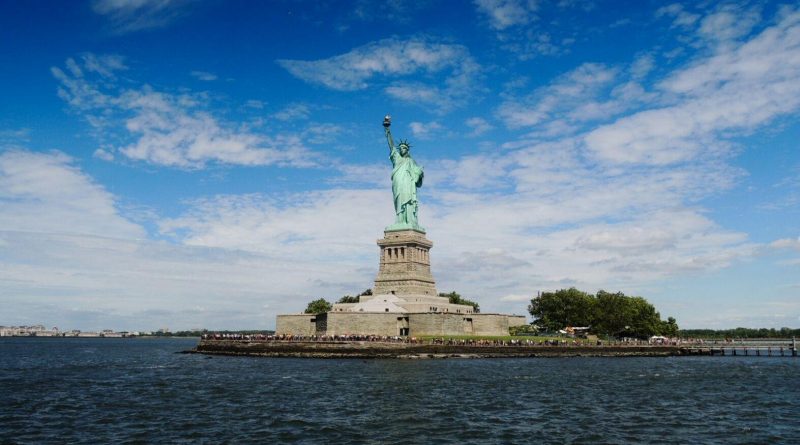The Inner Workings of the United States Elections
Much of the world was shocked when in 2016 Donald J. Trump was officially announced to be the 45th president of the United States. The three years that have passed since his inauguration feel like a blur, but all of that might change on November 3rd when Trump is finally up for re-election. But despite the elections not happening for another seven months, there has been lots of news about polls and votes, caucuses and primaries. Why is that? And what does it all mean?
Well, as the incumbent president is a Republican, the opposing Democratic party needs to decide who is running against Trump. This is decided at the Democratic National Convention, held this year from July 13 until July 16 in Milwaukee, Wisconsin. The Democratic Nominee is chosen through delegates, of which there are two types: pledged delegates and automatic or superdelegates. In order to guarantee the nomination, a candidate needs a majority of pledged delegates. If there is no majority, automatic delegates will be able to vote and a candidate must receive majority support from all delegates. There are a total of 4750 delegates, of which 771 are superdelegates and 3979 are pledged delegates.
A delegate is a person acting as a representative at, in this case, the Democratic National Convention. Delegates have to be members of the political party they are representing and are often local politicians, but can also just be supporters of a candidate. In the Democratic party, candidates need to amass at least 15% of the votes at either the state level or in a district. The delegates are divided proportionately among the candidates according to the percentage of votes they receive.
These delegates are elected either during a primary or a caucus; this differs per state. In a primary, citizens can simply vote for the candidates that are on the ballot, but there is a state-by-state difference in who can vote in these primaries. In some states any registered voter is allowed to participate; other states allow Independent voters to participate, but Republicans cannot vote in the Democrat primary, and vice versa; still other states only allow those enrolled in that primary’s party to vote, which excludes Independents (Sandy 2007).
The other option is a caucus; a meeting of members enrolled in the party that is holding the caucus. Here, representatives of the different candidates attempt to make a convincing case for their candidate and then the party members discuss them among themselves and openly vote for their choice. Turnout is significantly lower for caucuses than for primaries, but primaries are by far the most common in the Democratic nominating system.
Iowa has been the first state to hold its Democratic caucus since 1972, giving it significant influence in the other caucuses and primaries. As a result, many states have moved their primary or caucus to earlier in the year. This means that a large number of delegates are already pledged early on in the nominating season. One of the most important days in the nominating season is Super Tuesday, which took place on March 3rd. More than 1300 delegates were up for grabs, which amounts to about a third of all available delegates.
So who is running for the Democratic nomination? That list gets shorter every day and right now the only two candidates still running are Joe Biden and Bernie Sanders. The infamous billionaire Mike Bloomberg, former mayor of New York City, dropped out after Super Tuesday with 52 pledged delegates behind his name. Pete Buttigieg dropped out just before that, with a meagre 26 delegates. While Buttigieg’s platform was not groundbreaking, he was one of the youngest Democrats running for president, as well as the first openly gay candidate to win a presidential primary. Elizabeth Warren dropped out shortly after Bloomberg due to a similarly disappointing number of delegates.
As of now, the votes cast on Super Tuesday are still being counted and 102 delegates are still to be awarded. Bernie Sanders may have held the lead before March, but Joe Biden was able to catch up by winning the majority of the Super Tuesday states. Sanders and Biden are now running decently close, with Biden claiming 664 pledged delegates and Sanders claiming 573.
The most important states coming up in the nominating season with over a hundred delegates up for grabs are Michigan, Florida, Illinois, Ohio and Georgia in the month of March; New York and Pennsylvania in April; and New Jersey in June. If the following primaries end up with such close results, then the Democrats might be biting their nails come July 13.

But what about the Republican party? The Republican National Convention will be held from the 24th until the 27th of August in Charlotte, North Carolina. As of now, only one Republican candidate is still running against Trump: William F. Weld. But so far he has only received one delegate compared to the 833 delegates pledged to Trump; that’s a race that Weld will not be winning.
In the 2016 elections, 56% of voting-age citizens cast their ballot; a very low turnout compared to most developed countries. Especially compared to an 81,9% voter turnout in the 2017 elections in the Netherlands, but this may not be all that surprising once it is clear just how confusing and outdated the US voting system is. And whether Sanders or Biden will be able to beat Donald Trump in November, we’ll just have to wait and see.

